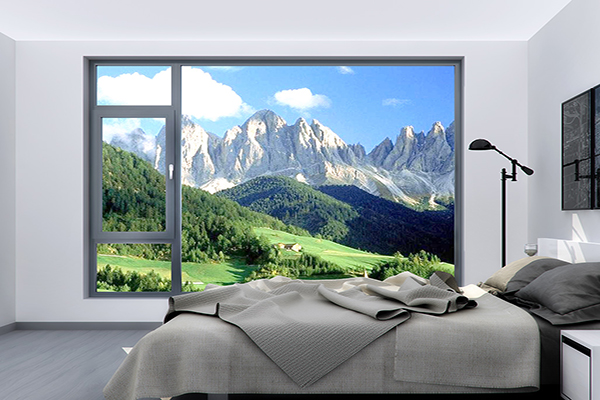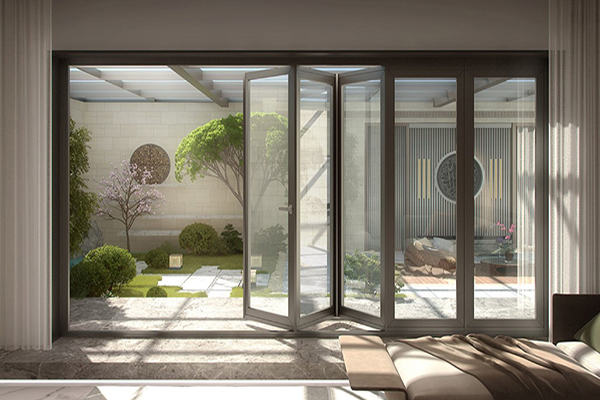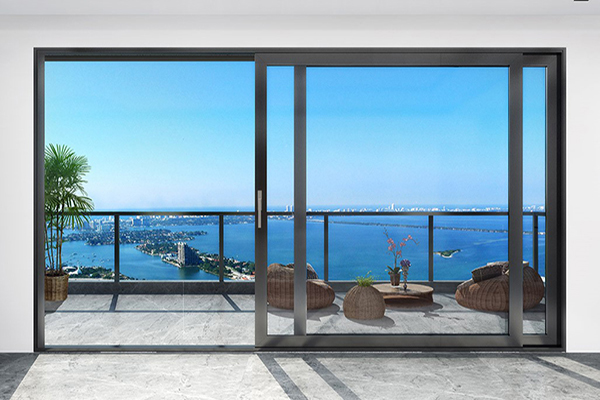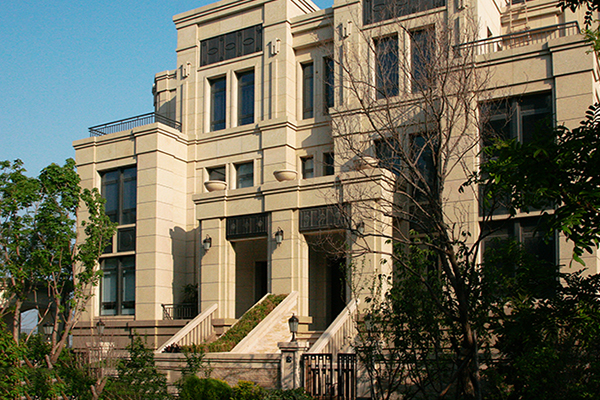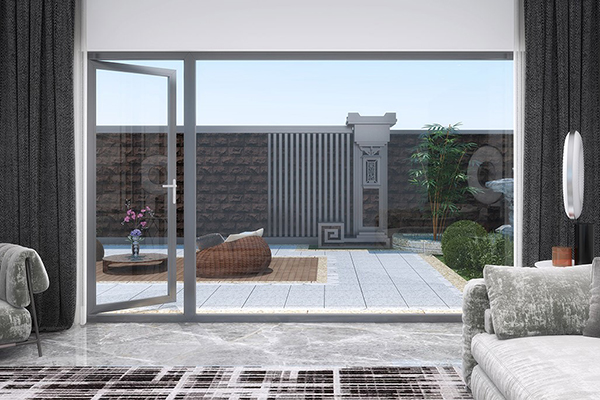Why should we choose windows with Low-E glass when selecting Aluminum windows? What role does it play for windows?
The contribution of Low-E glass to energy conservation is reflected in two aspects:
On the one hand, the Low-E film can reduce the heat exchange between the glass surface and the air, and decrease the heat transfer caused by the temperature difference on both sides of the glass (that is, heat transfer due to temperature difference), which will lower the heat transfer amount caused by the temperature difference of the glass.
On the other hand, the Low-E film can effectively reflect solar radiation, thus limiting the radiative heat energy of solar irradiation passing through the glass (that is, radiative heat transfer), which reduces the solar heat energy passing through. It is through these two ways that Low-E glass reduces the heat passing through the glass and thus demonstrates its energy-saving property.
In practical applications, Low-E glass is generally made into structures such as insulating glass and vacuum glass for use.
1. Excellent thermal insulation performance For Casement Windows
- Low-E glass (Low-emissivity glass), namely low-emissivity glass, has a high reflectivity for infrared rays. In winter, it can reflect the indoor heat back into the room, reducing the transfer of indoor heat to the outside through the glass, thus effectively reducing the consumption of heating energy. For example, compared with ordinary glass, Low-E glass can reduce the indoor heat loss by about 30% - 50%. It's just like putting a warm "coat" on the building, keeping the indoor environment warm and comfortable.
2. Good daylighting performance for Sliding Windows
- While blocking infrared rays, Low-E glass has a relatively high transmittance for visible light, allowing sufficient natural light to enter the room. Generally, the visible light transmittance is about 70% - 80%, which means that the indoor daylighting is good and the brightness of the room will not be sacrificed due to the energy-saving performance of the glass. Users can enjoy bright natural light indoors, reducing the dependence on artificial lighting during the day, which can not only save energy but also create a comfortable and natural atmosphere indoors.
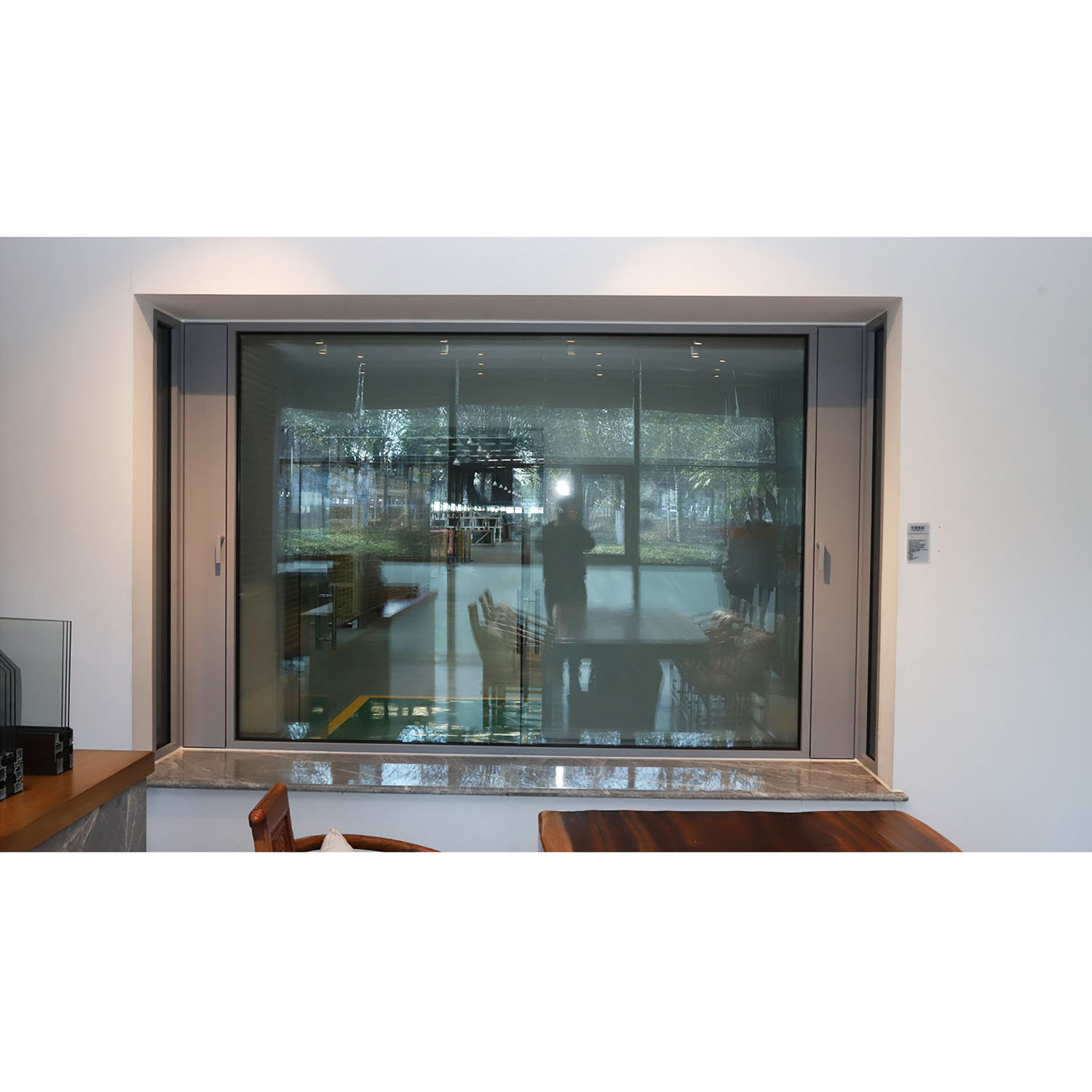
3. Outstanding sun-shading effect (for coated Low-E glass) for Folding Windows and Doors
- Some Low-E glass can block a large amount of solar radiant heat while ensuring effective daylighting through processes such as coating. It can selectively reflect the near-infrared rays and part of the visible light in the sunlight, reducing the solar heat entering the room. In summer, it can effectively prevent the indoor temperature from being too high and reduce the cooling load of the air conditioner. For example, in the afternoon when the sunlight is strong, the temperature in the room with Low-E glass is 3 - 5 °C lower than that in the room with ordinary glass.
4. Prevention of ultraviolet radiation for Awning Windows
- Low-E glass has a good blocking effect on ultraviolet rays and can block most ultraviolet rays (generally more than 90% of ultraviolet rays). Ultraviolet rays can cause fading, aging and other damages to indoor furniture, decorative materials and fabrics. Using Low-E glass can effectively protect indoor items and extend their service life. For example, the sofa placed near the window with ordinary glass may show obvious fading within a few years, while the color of the furniture in the room with Low-E glass can be maintained for a longer time.
5. Reduction of condensation phenomenon
- Due to the good thermal insulation performance of Low-E glass, the temperature difference between the inner and outer surfaces of the glass is relatively small. In cold weather, the inner surface of ordinary glass is prone to condensation due to too low temperature, producing water droplets, which will affect the line of sight and may lead to the growth of mold. However, Low-E glass can reduce the occurrence of this situation and keep the indoor environment dry and comfortable. For example, in coastal areas with high humidity, the condensation on the windows with Low-E glass is significantly less than that on the windows with ordinary glass.


